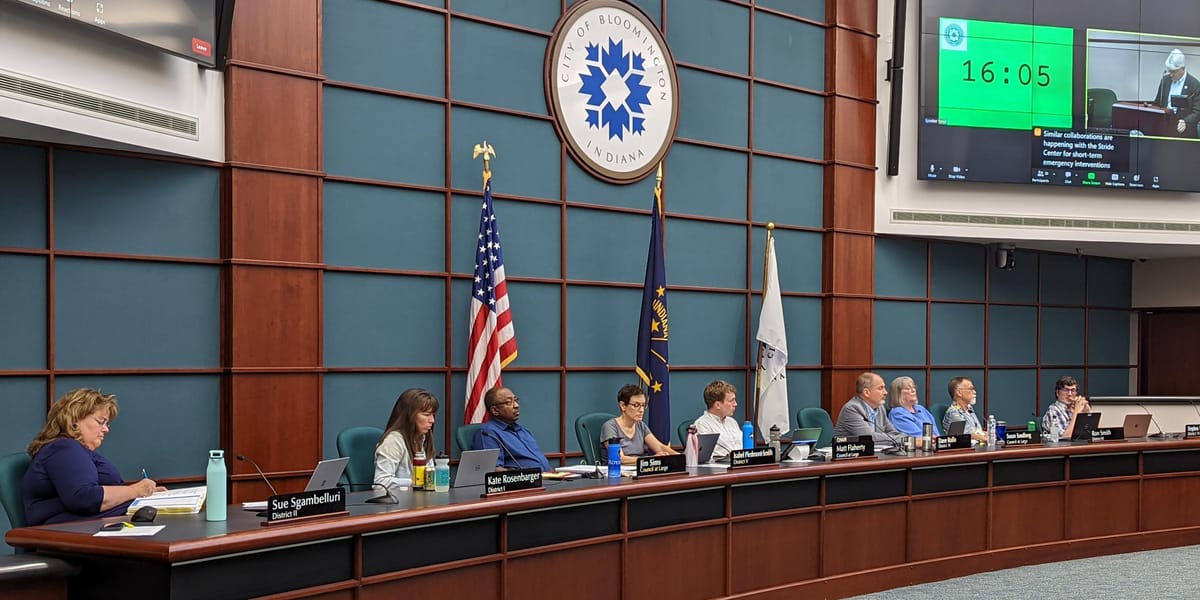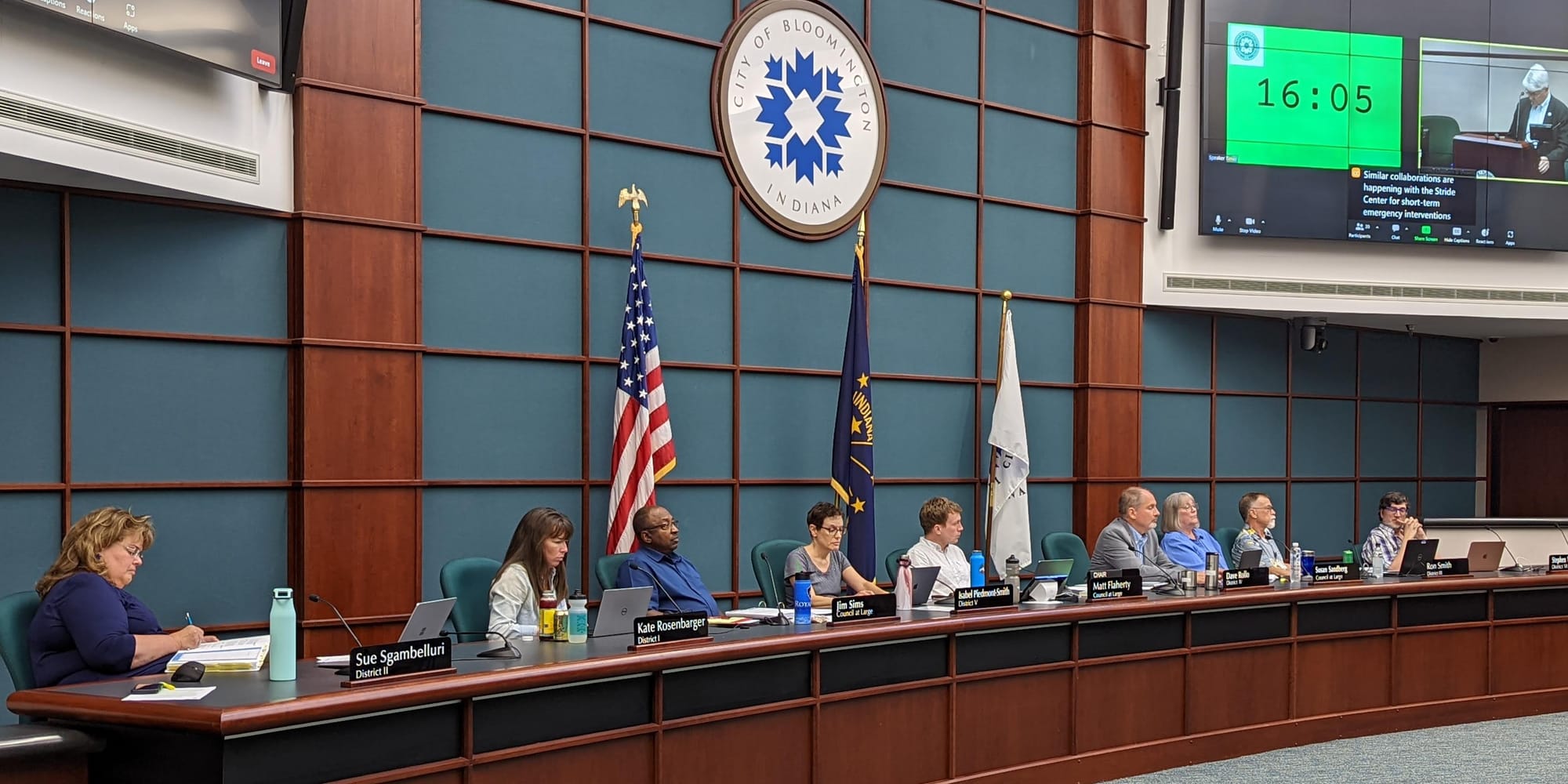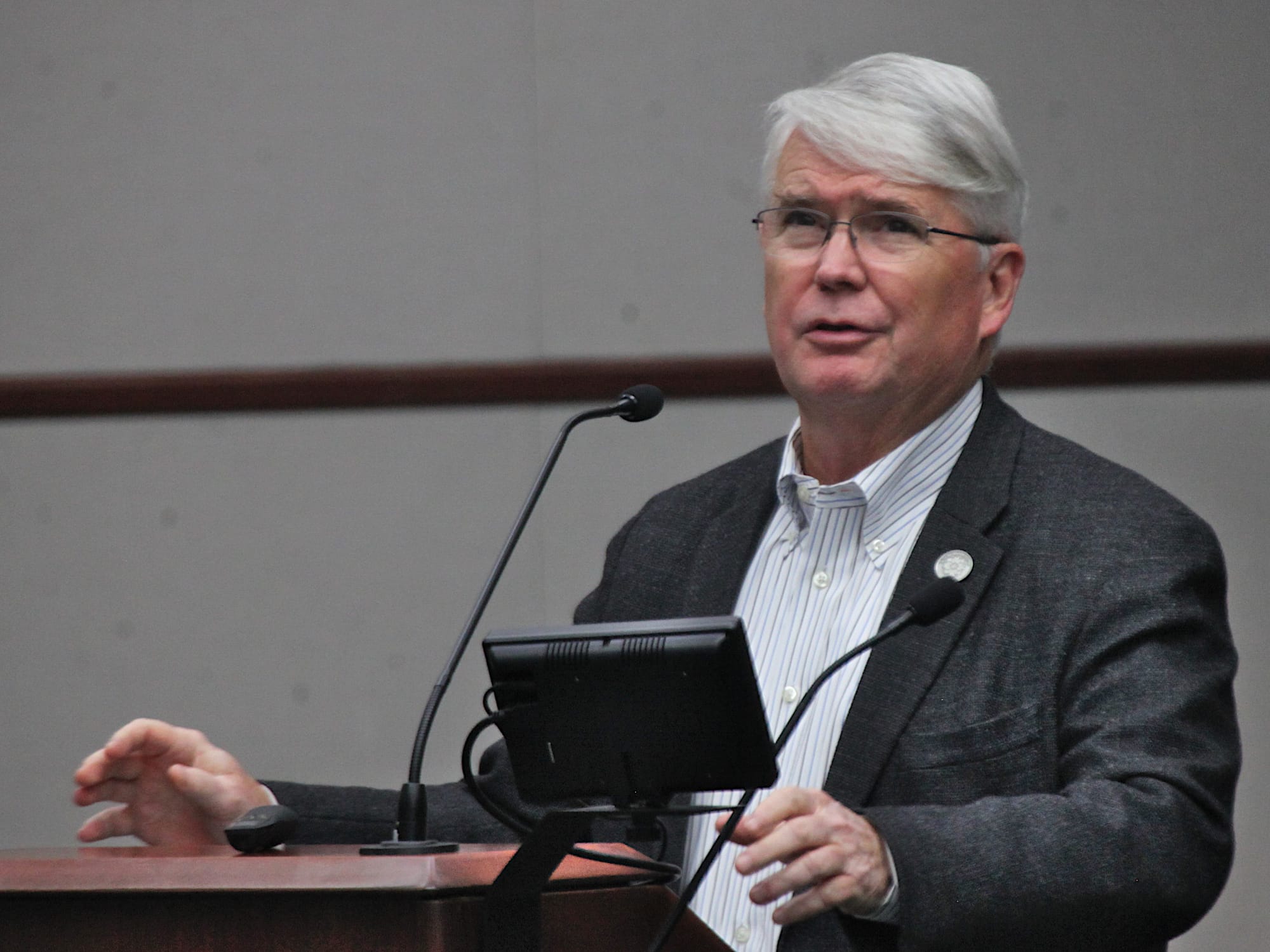Bloomington mayor unveils $20M more in one-time spending on first night of budget hearings



On Monday, Bloomington’s city council held the week’s first night of departmental budget hearings.
Three more nights of hearings are set to follow on successive days.
One piece of big news about the spending plan for 2024 came from Bloomington mayor John Hamilton’s introductory remarks.
To a basic budget of $131 million, which was released late last Friday, Hamilton wants to add $20 million in one-time spending, using ARPA (American Rescue Plan Act) funds and former CRED (Community Revitalization Enhancement District) money.
The money is supposed to be spent on five broad categories of items: infrastructure; housing; jobs and climate; diversity, equity and inclusion; and public health.
The ARPA and CRED package is one of three main themes that Hamilton has identified for his eighth and final budget of his two terms as mayor.
A Democrat, Hamilton will be leaving office at the end of the year. He did not seek re-election. The Democratic Party’s nominee in this year’s municipal election, Kerry Thomson, is almost certain to be the next mayor starting in 2024. She is unopposed on the Nov. 7 ballot.
A second theme of the 2024 budget is investment in the city’s workforce. The 2024 budget includes a 5-percent increase in salary for non-union employees, and a $500 one-time bonus. Firefighters will receive extra money to make up the difference between the 2-percent increase in their collective bargaining agreement and a 5-percent raise.
A new employee health clinic is on course to open before the end of the year, but no location has yet been identified, according to Hamilton.
A third theme that Hamilton has identified for the 2024 budget is public safety. The mayor announced that several recommendations from a 911 review committee were included in the budget, among them a pilot program for responding to some kinds of calls with non-sworn officers. Welfare checks are an example of the type of call that would get responses from non-sworn officers, Hamilton said.
A couple of slides with a more detailed breakdown of the ARPA/CRED package were provided by the mayor’s office to the city council office just 15 minutes before Monday’s meeting started.
At Monday’s meeting, councilmember Isabel Piedmont-Smith said, “My only comment is that I would have much appreciated seeing the ARPA/CRED fund proposals much earlier.”
The infrastructure projects in the package include: downtown and garage enhancements; greenways; matching money for the federal Safe Streets for All program; sidewalk improvements; traffic signal modernization and replacement; street pavement for buses and bikes.
Housing projects include: support for affordable home ownership; homeless and very low income support; and workforce rent.
A table of the proposed spending is included below.
Hamilton told city councilmembers on Monday that he wanted their feedback on the $20 million in expenditures that are to be funded with ARPA and CRED money.
He put it like this: “This proposal of $20 million is not written in stone.” Hamilton continued, “We are presenting a series of recommended investments that we believe will bring our community extraordinary value. If a majority of council prefers different allocations, we welcome those discussions in coming days and weeks.”
Hamilton’s unveiling of a plan on Monday to spend ARPA money can’t have been too much of a surprise to anyone who was tracking Bloomington’s ARPA expenditures. Bloomington has something like $10 to $12 million in its ARPA fund, and the money has to be obligated by the end of 2024.
But in the proposed 2024 budget released late last Friday there were no planned expenditures of ARPA money for 2024.
The question of how Bloominton was planning to get its remaining ARPA funds obligated by the end of 2024 got its answer in the form of the $20-million package of expenditures that the mayor unveiled.
By way of background, Bloomington received about $22 million through the ARPA, which was a $1.9 trillion stimulus bill signed into law by President Joe Biden in 2021, to help counter the effects of the COVID-19 pandemic.
By the end of 2022, Bloomington had spent about $5.2 million and showed about $16.9 million in its ARPA fund balance. For 2023, there were $4.9 million in budgeted expenditures from APRA funds. That means by the end of 2023 (this year), there would be around $12 million in ARPA funds left—to be obligated in 2024.
The CRED funds that are a part of the package have a separate origin. The CRED story starts in 1997, when the city council created a Bloomington Industrial Development Fund and a Bloomington Industrial Development Advisory Commission.
By the end of 2022, Bloomington had about $17 million in unspent money from its two CRED districts. When the CRED districts reached the end of their life, the remaining money in the funds was transferred to the city’s general fund.
At Monday’s meeting, councilmember Steve Volan asked Bloomington’s corporation counsel Beth Cate why the CRED money was not left in its separate CRED funds, so that it could be more easily tracked. Cate replied: “I believe the thinking about moving it…at the time was that we had reached the sort of statutory end effectively of what they were doing—they hadn’t operated in a while.”
Cate continued, “And I think it’s all kind of laid out in the documents that we created at the time. But the idea was this would free up uses for the fund, it wouldn’t restrict the fund in any way, in terms of what it could be intended to use.”
In fact, the reason that the CRED funds were transferred into the city general fund, after the CRED district expired, appears to be that the transfer is required under state law.
Bloomington’s budget week continues on Tuesday starting at 5:30 p.m. with presentations from Bloomington Transit, city of Bloomington utilities, the fire department, and the police department.
| Category | Description | Amount |
| Infrastructure | downtown and garage enhancements | $2,000,000 |
| Infrastructure | greenways | $1,200,000 |
| Infrastructure | Safe Streets for All | $2,000,000 |
| Infrastructure | sidewalk improvement | $1,000,000 |
| Infrastructure | signal modernization and replacement | $2,700,000 |
| Infrastructure | street pavement for buses & bikes | $2,000,000 |
| Total Infra | $10,900,000 | |
| Housing | affordable ownership | $2,250,000 |
| Housing | homeless and very low income | $500,000 |
| Housing | workforce rent | $2,250,000 |
| Total Housing | $5,000,000 | |
| Jobs and Climate | job support & growth/economic development | $925,000 |
| Jobs and Climate | solar/climate support | $575,000 |
| Total Jobs, Climate | $1,500,000 | |
| DEI | CFRD and HR | $500,000 |
| DEI | digital equity and it accessibility | $150,000 |
| DEI | parks accessibility: construction & equipment | $600,000 |
| Total DEI | $1,250,000 | |
| Public Health | collaboration mental health, substance use disorder | $1,000,000 |
| Total Public Health | $1,000,000 | |
| Grand Total | $19,650,000 |




Comments ()